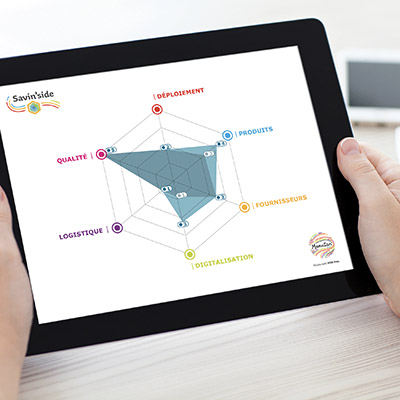The purchase order (PO) is a key element in corporate procurement management. Once it has been sent, this document has the value of a reciprocal commitment between a vendor and a buyer. The former must fulfil the order in compliance with the stipulated conditions, while the latter is required to receive the goods or services and pay for them. It’s a good way of regaining control of your expenditures and speeding up the purchasing process within businesses.
What is a purchase order?
A purchase order (PO) is a commercial document legally binding two parties, a buyer and a seller, in the context of a purchase requisition. Once accepted by the vendor, it acts as a contractual agreement. The purchase order is not mandatory. However, it is advisable to use it to secure the commercial relationship.
This document serves to formalise the sale. It lists all the terms and conditions of the service. This allows both parties to agree and commit to respecting them. The signature establishes proof of the consent of both parties and concludes the sale. This document then allows the buyer to check that the order is as agreed and the vendor to track sales.
The purchase orders need to include several pieces of information, with mandatory elements:
- The identity of the seller and the buyer (company name, registered office and contact details);
- The purchase order number;
- The date of the order;
- The description of the goods and/or services, including reference, description, delivery date, quantity of items, unit price and total;
- The total amount with the breakdown of the value-added tax (VAT), shipping charges and the total price including tax (TTC);
- Terms and conditions (return policies, warranties, etc.);
- The delivery address;
- Delivery terms;
- Billing address;
- Payment information.
The purchase order process
The purchase order can be established by both parties, buyer and seller. However, it is generally created by the buyer as part of their company’s procurement process.
Step 1: The buyer creates a procurement request
The first step is to create a procurement request, submitted to the procurement and/or finance departments. This is used to request approval to buy the necessary goods and services. The procurement request may be approved, rejected or examined in more detail.
Step 2: The buyer issues a purchase order
Once the procurement request has been approved, a purchase order is issued by the buyer. This is usually done through dedicated software that allows purchase orders to be submitted and tracked electronically.
Step 3: The supplier validates the purchase order
It is then up to the supplier to approve or reject the purchase order. They will carefully examine the quantities, prices, the total amount due and the general conditions. As soon as they validate the purchase order, they can send their invoice (indicating the PO number). They will also ensure that they prepare and deliver the ordered products and/or services.
Step 4: The buyer records the purchase order
After receiving and inspecting the goods, the buyer processes the invoice, matching it with the planned purchase order. Lastly, they record the purchase order so that the document can be easily retrieved in the event of an audit.
The benefits of purchase orders
Implementing a purchase order system within your company has several benefits. This allows you to have a structured and efficient procurement process, while securing existing relationships.
Avoiding disputes
The signed purchase order acts as a binding contract that stipulates commitments. In this sense, it acts as a legal document that allows knowing all the information on which the parties have agreed. This helps to avoid any potential disputes or misunderstandings regarding the transaction.
Ensuring order tracking
Purchase orders help keep track of incoming orders as well as the monitoring of expenditures and receipts within the business. This reduces processing time and prevents any duplicate orders or unexpected invoices. Because each order has a unique number that is then linked to the corresponding invoice, this simplifies the invoicing process.
Simplifying supplier relationships
Thanks to a well-established system, the entire supplier management process gains in clarity and fluidity. The supplier’s sales process is secured, all information is communicated concisely, the invoicing process is simplified… Purchase orders undoubtedly contribute to improving relationships with suppliers in the long term.
The benefits of electronic purchase orders
To gain in efficiency, speed and accuracy, companies have every interest in moving to digital purchase orders, through an e-procurement solution. This allows them to simplify the process thanks to structured purchase orders, as well as a real-time tracking system. Not to mention that a digital and unified system facilitates document search and data analysis. Kevin Nguyen, IT project manager at Inari Medical, shares his experience: "The research work done by the suppliers accounts team, which has to track down the engineers and ask them if they have received something or if there are dispatch notes, has decreased. They can now check all of this in one place: Make sure they have received the invoice, then check the purchase order and pay the invoice."
By eliminating having to manage paper documents, businesses will also limit manual errors, reduce their costs and their impact on the environment. It is also an opportunity to integrate the solution with other business tools, such as accounting software or inventory management systems. This ensures the consistency of data within the company.
Much more than a simple administrative document, the purchase order (PO) is an essential pillar of procurement and finance management in a firm. It is an essential tool for controlling costs, reducing supplier risks and enhancing the transparency of transactions









